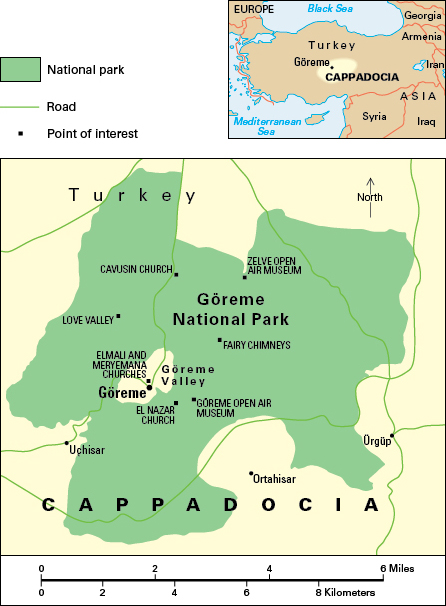Cappadocia is a region of east-central Turkey known for its spectacular rock formations. It lies in the central part of Turkey’s Anatolian Plateau. Many tourists visit the region each year to see its natural wonders. In Turkish, Cappadocia is called Kapadokya.


Ancient volcanic eruptions covered Cappadocia in thick ash and other volcanic fragments. The volcanic remains solidified into a spongy rock called tuff. Wind and water eroded away much of the rock, leaving behind an unusual, barren landscape of rock formations. Over time, these rocks took the shapes of giant columns, cones, mushrooms, ridges, and towers nicknamed “fairy chimneys.” Some people added to the unusual landscape by burrowing into the formations. They created caves, churches, homes, and entire towns within the rocks, as well as deep underground.
Cappadocia’s most spectacular rock dwellings are in the Göreme Valley. There, a network of caves, complexes, and tunnels includes churches and convents dating from the A.D. 300’s. Many of the structures contain excellent examples of Byzantine art, an Eastern Christian style that flourished from the 300’s to the 1400’s. Göreme National Park and the Rock Sites of Cappadocia were named a World Heritage Site in 1985. Such sites are places of unique cultural or natural importance as designated by the United Nations Educational, Scientific and Cultural Organization (UNESCO).
